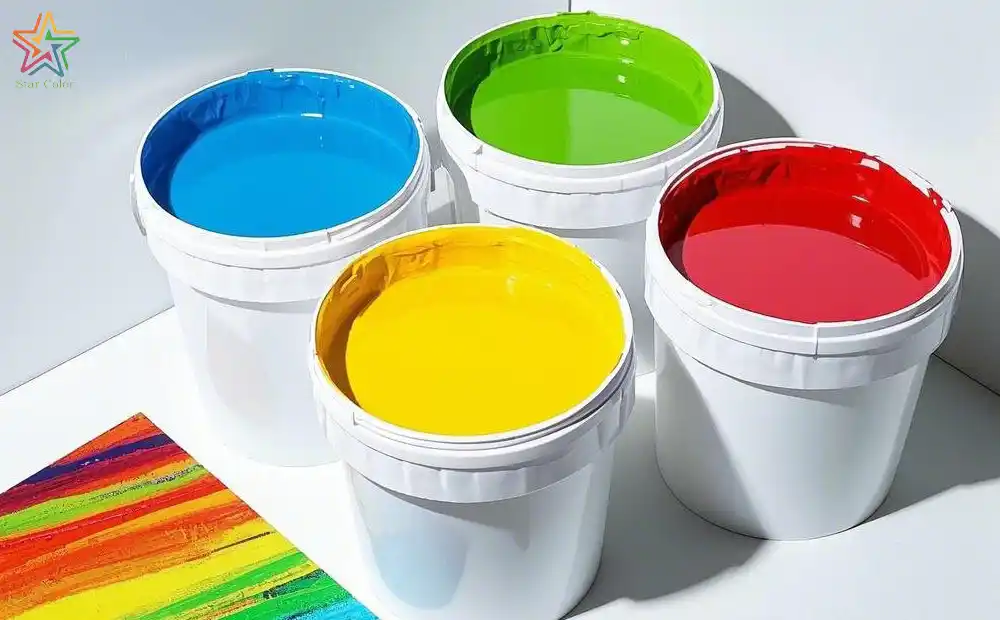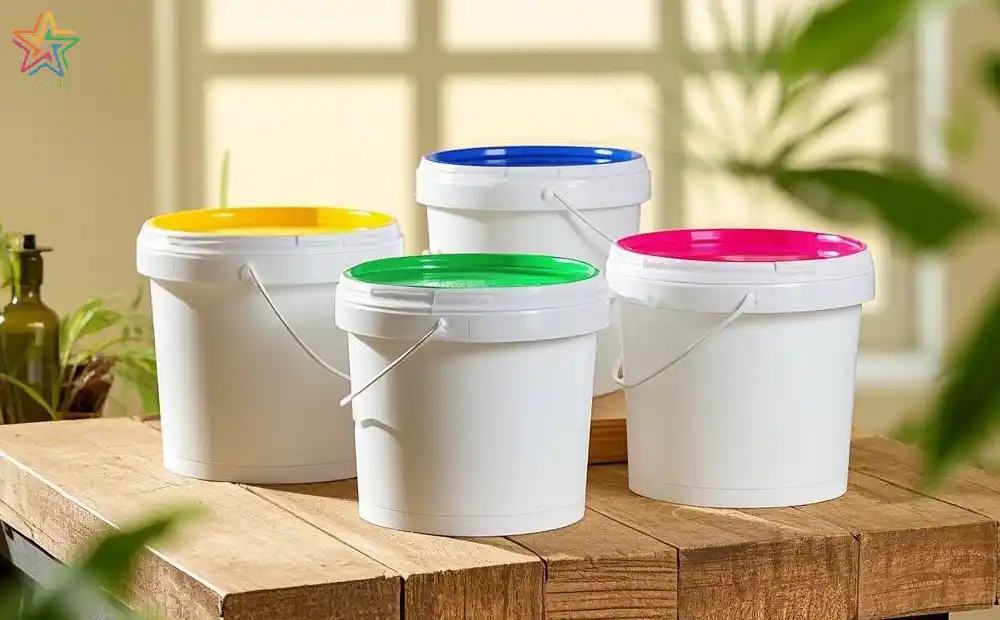What is Lamination Ink?
Date: May 21 2025 From: Star Color Views:
I. Definition and Core Functions of Lamination Ink
Lamination Ink is a specialized ink designed for multi-layer material lamination processes, characterized by its triple functions of chemical bonding, functional integration, and visual performance. By forming chemical bonds between the printing layer and substrates (such as BOPP/PE/aluminum foil), lamination ink achieves firm adhesion of multi-layer structures (peel strength ≥4N/15mm). It also imparts additional properties like oxygen barrier, moisture resistance, and high-temperature tolerance (121°C/30min) through fillers such as nanoclay and aluminum oxide. Compared with ordinary inks, lamination ink offers a temperature resistance increase of over 50% and strictly controls solvent residue below 3mg/m², making it the preferred choice for high-demand packaging scenarios.

II. Chemical Composition and Classification of Lamination Ink
The performance of lamination ink stems from its precise formulation design. The resin matrix (40-60%) provides basic adhesion, with polyurethane and acrylic systems suitable for chemical resistance and flexibility requirements, respectively; isocyanate-based curing agents (5-15%) trigger cross-linking reactions, while silane coupling agents (0.5-2%) enhance adhesion by improving substrate wettability.
Chemical Composition of Lamination Ink
| Component |
Function |
Content (wt%) |
Key Mechanism |
| Resin Matrix |
Provides basic adhesion and film formation |
40-60 |
Polyurethane resin (chemical resistance)/acrylic resin (flexibility) |
| Curing Agent |
Triggers resin cross-linking |
5-15 |
Isocyanate-based (forms urethane bonds via reaction with hydroxyl groups) |
| Adhesion Aids |
Improves substrate surface wettability |
0.5-2 |
Silane coupling agents (chemical bonding at hydroxylated substrate interfaces) |
| Functional Fillers |
Imparts barrier/conductive/thermal properties |
3-8 |
Nanomontmorillonite (oxygen barrier)/conductive silver paste (conductivity) |
| Solvent System |
Regulates ink fluidity and drying rate |
20-40 |
Ethyl acetate/butanone (solvent-based)/deionized water (water-based) |
Comparison of Main Lamination Ink Types
| Type |
Curing Method |
VOC Emission (g/L) |
Core Advantages |
Typical Applications |
| Solvent-Based Lamination Ink |
Hot air volatilization + chemical cross-linking |
300-500 |
High adhesion, low-temperature resistance (-40°C) |
General food packaging, daily chemical films |
| Water-Based Lamination Ink |
Water evaporation + self-cross-linking |
≤50 |
Environmental-friendly, low migration, sterilization-resistant |
Medical sterile packaging, baby food packaging |
| UV-Curable Lamination Ink |
UV light-induced polymerization |
0 |
Instant curing (<1 second), high precision |
Electronic labels, optical film bonding |
| Solventless Lamination Ink |
Moisture-catalyzed cross-linking |
0 |
High-speed production (over 200m/min) |
Flexible packaging production lines, aluminum foil composites |
III. Five Core Application Areas of Lamination Ink
- Food Packaging
Lamination ink is used in high-temperature retort pouches (phenolic resin-modified ink resistant to 121°C/40min) and liquid packaging (pH 2-12 tolerance). The inner-layer ink of Tetra Pak has passed FDA 21 CFR 175.300 certification to ensure food contact safety.
- Pharmaceutical Packaging
Blister packaging for pharmaceuticals uses ink with nanomontmorillonite to achieve an oxygen transmission rate <0.5cc/m²·day; medical sterilization bags employ acrylic-epoxy hybrid systems resistant to gamma ray sterilization.
- Industrial Materials
Lithium battery packaging uses fluorine-modified polyurethane ink resistant to electrolyte corrosion; building films achieve UV resistance through TiO₂/carbon black composite systems.
- Electronic Devices
Flexible circuit boards use conductive silver paste lamination ink (resistivity <0.01Ω·cm), while optical film layers achieve precise bonding through high light transmittance (>92%) ink.
- Smart Packaging
Temperature-indicating inks monitor food freshness through irreversible color changes, and conductive inks for RFID tags drive logistics tracking innovations.
IV. Key Performance Indicators and Testing Methods for Lamination Ink
Core Performance Requirements:
| Indicator |
Test Standard |
Basic Requirements |
High-Barrier/Electronic Grade Standards |
Testing Equipment |
| Peel Strength |
GB/T 8808 |
≥4N/15mm |
≥6N/15mm |
Universal material testing machine |
| Solvent Residue |
GB 31604.1 |
≤3mg/m² |
≤1mg/m² (medical grade) |
Gas chromatograph (GC-MS) |
| Oxygen Transmission Rate |
ASTM D3985 |
<1cc/m²·day |
<0.1cc/m²·day |
Coulometric oxygen permeation tester |
| Migration Resistance |
EU 10/2011 |
≤0.01mg/kg |
≤0.005mg/kg |
Migration simulation device |

Lamination ink is undergoing a comprehensive upgrade from a single adhesive function to environmental friendliness, intelligence, and functional integration. In 2024, bio-based materials, digital printing, and smart packaging will become key growth drivers, while policy-driven environmental technologies (such as a 35% penetration rate for water-based inks) will reshape the market landscape. With the application of cutting-edge technologies like graphene and nanomaterials, lamination ink will further expand into emerging fields such as flexible electronics and medical diagnostics, promoting the packaging industry's transition toward a sustainable circular economy.
 RU
RU
 EN
EN
 CN
CN


